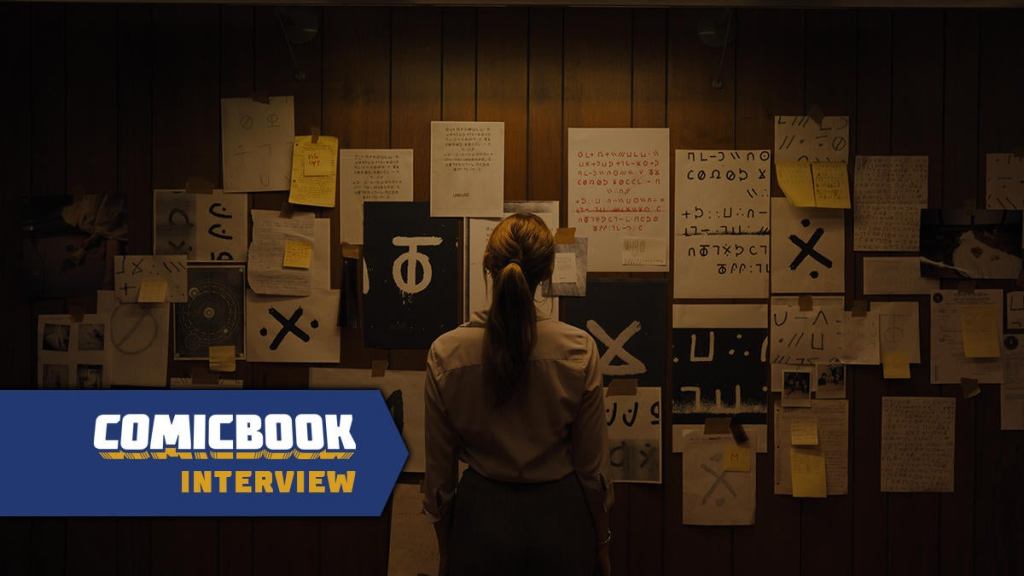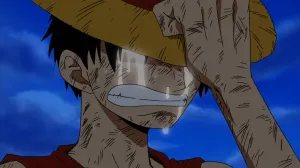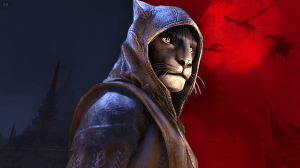Filmmaker Oz Perkins might not be a household name, but among genre fans, it’s a bit of a different story. Making his directorial debut with The Blackcoat’s Daughter, which he then followed with I Am the Pretty Thing That Lives in the House and Gretel & Hansel, each of his films up to this point have delivered different flavors of terror. With his new film Longlegs, Perkins explores a new type of narrative for his career, though he has described it as bringing together all of your favorite genre elements into one horrifying ordeal, featuring serial killers, the supernatural, and Satan. To help find a method to the madness, editors Greg Ng and Graham Fortin worked with Perkins to create one of the year’s most unnerving horror experiences.
Videos by ComicBook.com
Longlegs is described, “FBI Agent Lee Harker (Maika Monroe) is a gifted new recruit assigned to the unsolved case of an elusive serial killer (Nicolas Cage). As the case takes complex turns, unearthing evidence of the occult, Harker discovers a personal connection to the merciless killer and must race against time to stop him before he claims the lives of another innocent family.”
ComicBook caught up with Ng and Fortin to talk about collaborating with Perkins, their approach to the disturbing story, and how to handle Cage’s terrifying killer.

ComicBook: Greg, one thing that I noticed in the production notes is that you described editing a movie as playing with LEGO to a degree. For someone who either is a young family member or is an audience member who doesn’t necessarily understand the similarities, could you elaborate on what is so similar about those two activities?
Greg Ng: Editing is playing LEGO with videos and emotions and story. So it’s like the director and the production team go out to the LEGO store and they buy a couple of red bricks and find some yellow heads, and then eventually you get this bag of LEGO in which you construct something that the director had set out to do, and you help the director build that LEGO thing.
There’s another analogy that we like to talk about, which is editing is like cooking, maybe that’s a better analogy. There’s the director who wrote up this recipe and goes out there to buy all the ingredients with the crew, and we set out to make beef pot pie, and you get the beef and then you get the thing and then you realize, “Oh, this beef pot pie is turning into a beef Wellington.” Or maybe in some cases it might turn into maybe something, just a stew and there’s no crust and you’re like, “Well, it’s still pretty good stew.”
I do like that analogy because it’s also like you when you’re cooking and you’re like, “Wow, I forgot that I don’t have this ingredient,” or, “I went to the store and I forgot the garlic, but I’ve got garlic powder. Can we use that instead of having to go to this store and put Nicolas Cage in these prosthetics for this one pickup shot?” How did this collaboration with Oz come about? Were you in from early on? Was it a scheduling thing?
Graham Fortin: It came to be basically through the producer Chris Ferguson and Brian Kavanaugh Jones. Both Greg and I have worked with those two for almost 15, no, 10, 12 years now.
Ng: A long time.
Fortin: A long time, which we don’t really want to put on paper, though, that number, but it came through them and I’ve been fortunate enough to work on other projects with Chris Ferguson and Brian. They called me up and they said, “Would you be interested in working on this?” And it went from there. Obviously, being familiar with Oz’s work, it was a dream come true to be able to work with him. He’s such a big fan of movies. One of the highlights of working with him was just nerding out about old movies in the edit room when we finally got to that stage with him.
What makes working with Oz Perkins as opposed to some of the other collaborators you’ve worked with, what makes working with him so unique and also along those lines, what even makes Longlegs such a unique project?
Ng: We’ve been just trying to figure out, what is it? Working with Oz is a pleasurable experience. He’s a hilarious guy. I don’t know if you’ve seen any of his interviews elsewhere on the Internet or from before or if you’ve seen Legally Blonde, but he is a hilarious guy to work around, and he has an extreme depth of knowledge about cinema. I feel like coming in to work with him, I’m always learning something new about, especially old classic cinema and stuff like that.
I feel like his knowledge of cinema and what to expect, he’s constantly trying to push the envelope, try something new, collaborate with the whole team, and bring something new to the table. So when we think about Longlegs, it’s not necessarily a lot of original ideas in terms of what is it; it’s a serial killer. There’s satanic elements. It’s like Silence of the Lambs and all those things. But what makes it unique is the flavor that the movie has managed to come together when we’re following that recipe. There is a beef Wellington or whatever, a pot pie there that is not quite your standard movie.
We used to say it in the edit suite, it’s like, what did we call it? We made up a fake French word like “nouveau amour.” It has an artistic vibe throughout it, which is, I think, unique to Oz, that it has this Perkins-ism in the tone of the movie. And certainly obviously the cinematography from Andreas Roche and the sound design and everybody’s efforts, the production design. They all culminate to give this very unique take on a horror movie. Obviously the performances are amazing as well.
One of the things that I know Oz has specifically talked about and just my initial reaction is the staging of every single frame, the composition of every single frame, the way that the camera moves, the stilted dialogue and performances, everything feels like trying to remember a nightmare. Afterwards, I read that Oz wanted to get that across, and he absolutely got it across. So in the edit, how do you get that across? Do you feel your job as an editor is, “I’m just going to do what Oz tells me to do?” Or is it almost the DNA of how shots come together, do you feel like you can amplify that dreamlike detachment?
Fortin: That’s a great question, and I think as you’re editing something or anything, it’s one day at a time, one scene at a time, one shot at a time, and it goes through you as an editor. You review it and it becomes a part of you, and you build each of these scenes individually each day. It comes together and then, all of a sudden, you have this massive timeline of scenes that are strung together. And it’s a horrific, awful process to watch that first assembly edit of it because it’s so painful, because it is so not the movie that this eventually becomes. But as a result of processing all that footage day by day, you start to remember certain visuals of it randomly.
When I’m out of the office, I can be shopping for my groceries and then I’ll have a shot of Longlegs pop in my head, which is similar to perhaps the way that some of the scenes play out here where Lee Harker’s out in her world and all of a sudden, whoa, there’s a shot. And that’s one of the joys of editing is you’re working on a scene and then something will come in from the subconscious and it will connect to whatever scene you’re working on right now is, and then you’re putting these two things together. And then this third thing comes up and you’re like, “What was that?” Or, “Should we try this?” And that’s one of the joys is to come up with an idea or Oz will have an idea and we’ll try it out, and, “Does that feel good?” “I don’t know. I don’t know.” Well, it feels good to me.
Ng: One thing especially, it’s hard to remember because we did work on Longlegs a year ago, but on the more recent projects that we’re working on with Oz, and it’ll come back to me as we discuss it, but as we’re editing the project, there’s this talking about remembering a nightmare and stuff like that. It’s like, “How can we take a scene that exists in the plane of reality and bring it beyond just a person in a room?” Or, “How can we take something that two people talking isn’t just two people talking?” There has to be an atmosphere of something beyond that that is seeping into reality.
And when you can have that happen, it becomes, I guess, the potential for creepiness or the atmosphere becomes more than you’re just listening to people discussing or a person driving a car. It’s no longer those elements. And when you can modulate the story by having little bumps of subconscious or this kind of energy that you can add into some sort of reality that the whole story starts to go above what is normal.
I know that the marketing has been very intentionally not showing what Longlegs looks like. And the marketing has been so effective that I was prepared for, “If this movie doesn’t literally kill me, I’m going to be disappointed.” But just literally the opening scene alone, those five minutes of the station wagon, the young Lee Harker, Longlegs standing there, and the reveal of the title, as soon as that happened, I was like, “F-ck, yes. This is what I was looking for.” I wondered if you could talk about how you and Oz navigated when and how to reveal Longlegs, because the marketing is obviously going to be completely different from — you’re just trying to make this film so it’s, you’re not going to pull back a curtain, but how much do we tease? Is it a matter of, were you cutting frame by frame? “Nope, that’s too much of him.” Is it the shots that you’re using?
Ng: That’s a good question because that is something that we discussed the whole time. It was like, “How much do we give?” And even beyond that, “How much information do we give about the details?” There’s this fine line of you tell enough about something to create intrigue, but not too much that you tip people over and give them too much information and then they see everything coming.
All that was very similar to the way that Longlegs is treated because at one point in time, the intro scene did play out longer and you get a lot more backstory and information about it, but then it’s like that thing where you just see enough and you want to see more. So it’s like, well, this is the perfect way, and the beginning is just by having the title right there, and then people will be like, “What? What? Where’s the rest of it?” Then you get that energy and curiosity to keep people hooked until later.
It’s also interesting because the character of Longlegs has a soft intro. When you do finally get to see him, you get pieces of him. It’s not like the curtain’s open and there’s a big fanfare. It happens very slowly in a way, which is his character being kind of bizarre, a little bit older, maybe tired as a character, and washed up. It’s like there’s this glam rock aspect to him, burnt out idea that his character carries and he’s handled in that way.
Fortin: I do remember putting together the titles we’re talking about, the opening titles, and I remember Oz had the T-Rex song in mind. And I remember him saying, “We’re going to blow everybody’s socks off. This is going to be f-cking cool.” He’s like, “Imagine sitting in the theater and having this…” He knew what it was going to be.
Longlegs is in theaters now. Come back next week for more of our conversation with Greg Ng and Graham Fortin.
This interview has been edited for length and clarity. You can contact Patrick Cavanaugh directly on Twitter.








